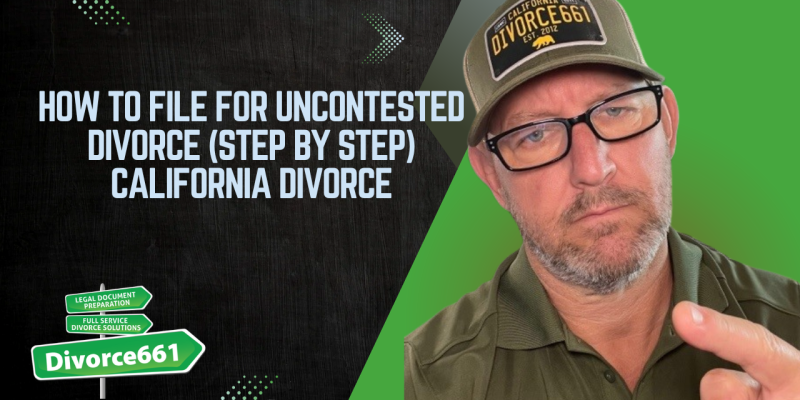FL-100 Divorce Petition Mistake: Why You Must List a Date of Separation
Filing for divorce can be a complicated and stressful process, especially if you try to navigate it on your own. One of the most common errors I see when clients come to me after attempting to start their own divorce is forgetting to list a date of separation on the FL-100 Divorce Petition. This seemingly small oversight can cause major delays and even rejection of your case when you submit your judgment.
Understanding the Importance of the Date of Separation
The date of separation is a critical piece of information on your divorce petition. It marks the official end of your marriage in terms of legal proceedings, and it helps determine the length of your marriage. Courts use this date to calculate timelines for various legal requirements, so accuracy is essential.
Many people hesitate to list a date of separation because they believe they were never truly separated, especially if they continued living under the same roof or didn’t physically move out. However, the law requires you to provide a specific date of separation regardless of living arrangements.
What Happens If You Don’t List a Date of Separation?
If you fail to include a date of separation, or if the dates you provide don’t add up to the length of your marriage, your entire divorce case can be rejected when you submit your judgment. This means you’ll have to start over by filing an amended petition, essentially resetting your case and prolonging the divorce process.
How to Choose the Date of Separation When You’re Still Living Together
In cases where neither party has physically moved out or separated bedrooms, and you’re still living together, you might wonder what date to use. The simplest solution is to use the date you file your divorce paperwork as the date of separation.
This is a practical and legally acceptable approach that prevents your petition from being rejected. It ensures the court has a clear and definite date to work with, even if the living situation is complicated.
Steps to Fix a Petition Without a Date of Separation
If you’ve already submitted a divorce petition without a date of separation, don’t panic. The fix involves filing an amended petition that includes the correct date. While this can feel like starting over, it’s necessary to avoid rejection and delays.
- Review your original petition and identify where the date of separation should be listed.
- Determine an appropriate date—either the actual separation date or the filing date if still living together.
- File an amended petition with the court that includes this date.
- Verify that the length of your marriage aligns with the dates you’ve provided to prevent further errors.
Final Thoughts
When filing for divorce, accuracy and attention to detail are paramount. The date of separation is not just a formality—it’s a legal necessity that can make or break your case. Even if you and your spouse are still living together or have a complicated separation story, always include a clear date of separation on your FL-100 petition.
By doing so, you’ll avoid unnecessary delays, rejected paperwork, and the frustration of having to restart your case. If you’re unsure about how to list your date of separation or need help navigating the process, consider consulting with a professional who can guide you through the paperwork correctly the first time.
Remember, the goal is to make your divorce process as smooth and efficient as possible, and a simple but crucial step like listing the date of separation correctly can help you get there.








